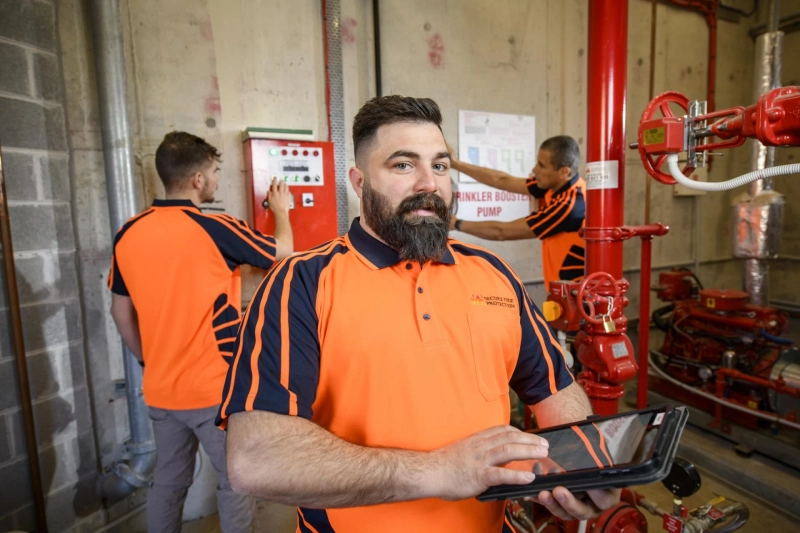Hydrant-Sprinkler Flow Test & Passive Fire & Smoke Systems: Enhancing Fire Safety Measures
In the realm of fire safety, the implementation of effective measures is crucial to protect lives and property. The Hydrant-Sprinkler Flow Test and Passive Fire & Smoke Systems are critical components in this field. Let's explore the significance of these systems and how they contribute to enhancing fire safety measures.
Hydrant-Sprinkler Flow Test: The Hydrant-Sprinkler Flow Test is a vital procedure conducted to evaluate the performance of hydrants and sprinkler systems. It involves measuring the water flow rate and pressure from hydrants and sprinkler heads under simulated fire conditions. This test is essential to ensure that the fire protection systems are in optimal working condition and can deliver adequate water during a fire emergency.
The primary objective of the Hydrant-Sprinkler Flow Test is to determine the available water flow and pressure at various points within the system. By conducting this test, firefighters and building managers can identify any deficiencies or obstructions in the system that may hinder its functionality during a fire incident. It helps identify weak spots, leaks, or inadequate water supply, allowing for timely maintenance and repairs.
Moreover, the Hydrant-Sprinkler Flow Test assists in determining the design and layout of fire protection systems. It provides crucial data for hydraulic calculations, ensuring the system meets fire suppression standards. By accurately assessing the flow and pressure capabilities, engineers and designers can make informed decisions about the size and placement of hydrants and sprinkler heads, optimising the system's effectiveness.
Passive Fire & Smoke Systems: Passive fire and smoke systems play a significant role in containing and preventing the spread of fire and smoke within buildings. These systems are designed to classify areas, creating barriers that limit the movement of flames, heat, and smoke, allowing occupants to evacuate safely and reducing property damage.
One of the key elements of passive fire protection is the use of fire-resistant materials for building construction. Walls, floors, doors, and ceilings are constructed using materials that can withstand high temperatures and prevent fire from spreading from one area to another. Fire-rated doors and walls are installed to create fire compartments, confining the fire to its point of origin and preventing its rapid progression.
Another critical component of passive fire protection is installing fire-resistant glazing systems. These systems use specialised glass that can withstand exposure to fire and high temperatures. They are commonly used in windows, doors, and partitions, allowing for safe evacuation routes and maintaining visual connection during emergencies.
Additionally, passive smoke control systems are employed to limit the spread of smoke within buildings. Smoke barriers, such as smoke curtains or doors with smoke seals, are strategically placed to prevent smoke migration, allowing occupants to breathe cleaner air and improving visibility for evacuation.
Integrating passive fire and smoke systems with active fire protection systems, such as sprinklers and alarms, creates a comprehensive fire safety strategy. While active systems respond directly to a fire incident, passive systems work silently behind the scenes, providing crucial barriers and containment measures.
In conclusion, the Hydrant-Sprinkler Flow Test and Passive Fire & Smoke Systems are indispensable elements of effective fire safety measures. The flow test ensures the functionality of hydrants and sprinkler systems, providing adequate water supply for fire suppression. Passive fire and smoke systems compartmentalise buildings, preventing the spread of fire and smoke and allowing occupants to evacuate safely. By prioritising implementing and regularly maintaining these systems, we can significantly enhance fire safety standards, protecting lives and property from the devastating impact of fires.



